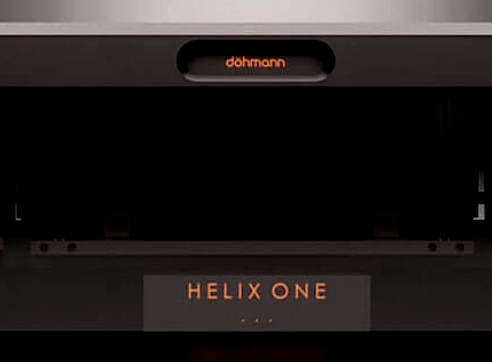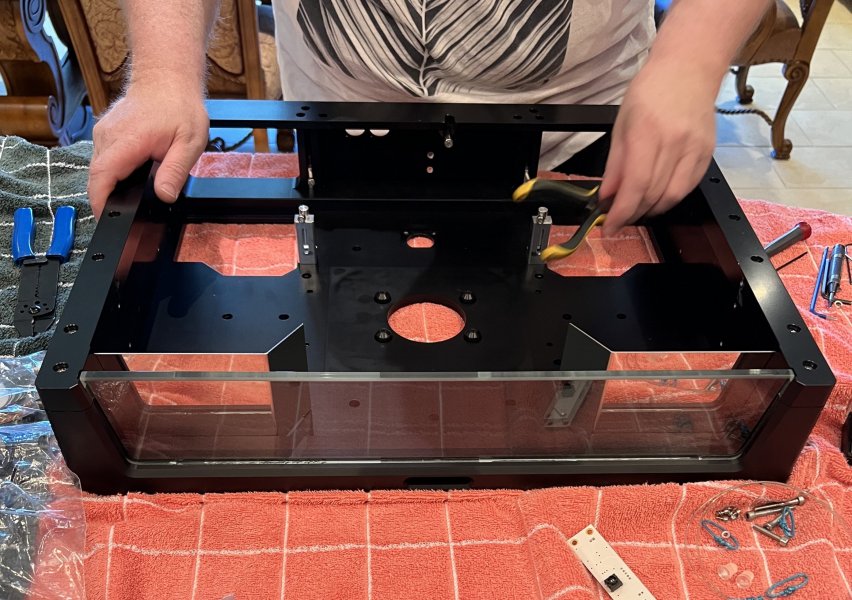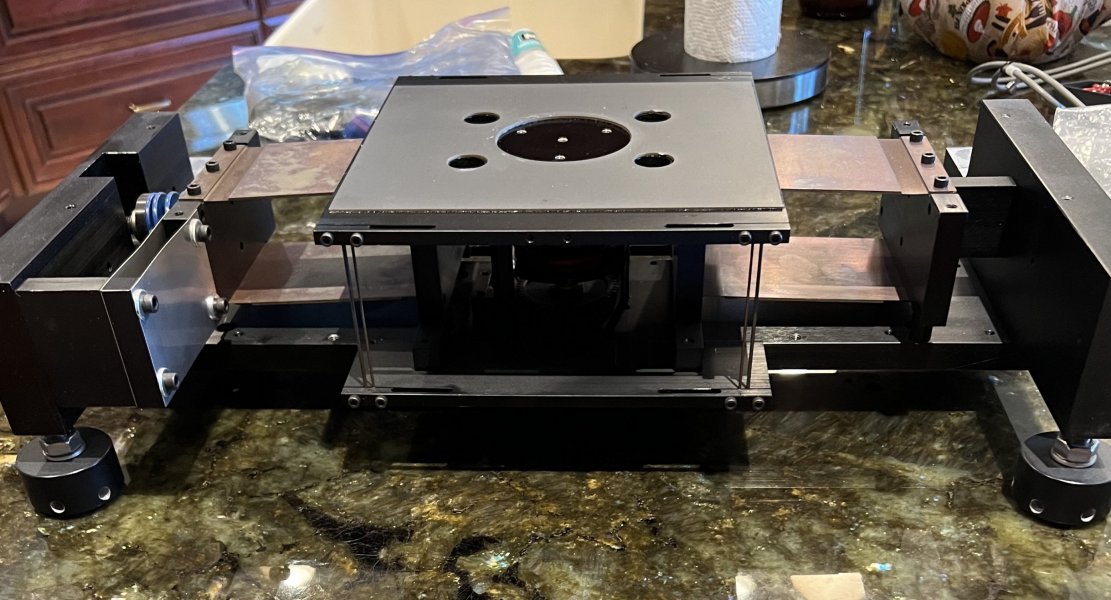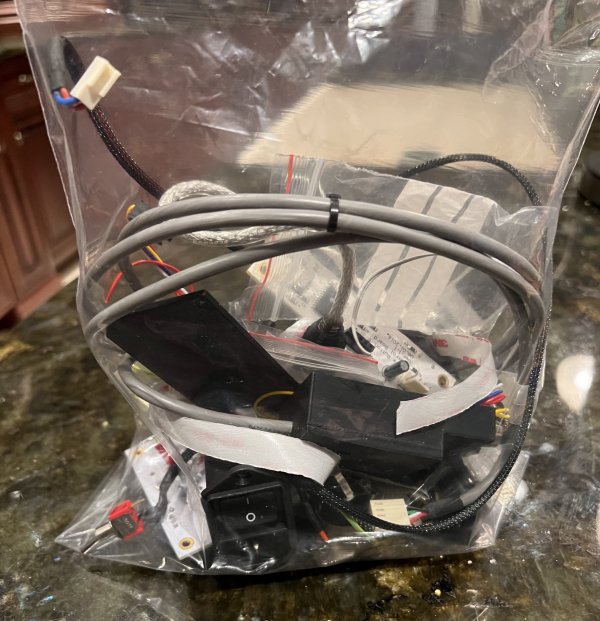Mark Dohmann Arrives in NJ.
The latest enhancement of my system was delivered from Australia by a personal visit from Mark Dohmann about 4 weeks ago. As described previously, I sold my much beloved Goldmund Studio with the T3F arm (that I owned for 30 years) a few years ago and acquired Mark’s Helix Mk2 turntable which has served me well. However, Mark has recently updated his Helix line with a MK3 update that promised some major advances at a reasonable cost. (The 3 dots under the Helix One logo signifies the Mk3 version)

In October 2022, Dohmann Audio introduced the new Mk3 version of the Helix One which has the following improvements over the previous Mk2 version:
New Advanced Composite Bearing
New DC Power Supply
New Drive System
Improved Platter Design
New RSA resonance control technology
New Advanced Composite Armboard (ACA)
New Record Clamp with RSA Resonance Control
More features and detailed comments can be found on the Dohmann website
https://dohmannaudio.com/helix-one/ and thus will not be repeated here. It was a genuine pleasure to get to know Mark a little better although we have spoken by phone several times. We spend the first evening listening to my system through the Mk2. The second day found me mesmerized watching Mark disassemble the table and basically rebuild it from the ground up.

Essentially the only thing he didn’t change was the ingenious Minus K suspension system.

Watching him work was a treat. It was like watching a great surgeon who took great pride and infinite attention to detail in completing the surgery which he made look easy but was quite detailed. Here are 2 examples of Mark’s obsessiveness.
- He had to drill two holes in the chassis to install a speed regulating buttons, He drilled the holes and the buttons (and shrouds) fit perfectly. But that wasn’t good enough for Mark. Even though it would never be seen due to the button shroud, he then took the time to countersink the holes he drilled! To be clear, that’s for holes that nobody would ever see. Only a perfectionist with a bit of OCD does things like that. My kind of guy!
- He must have spent 15 minutes adjusting the platter so that it’s out-of-round spec was within 1/1000 of an inch. There was no way he would have quit until he achieved what is the limit of what was possible. I was genuinely impressed (I’ve seen a lot of eye surgery by fine surgeons and wonder if they would have done the same.)
Make no mistake, this upgrade was not a trivial effort. It took about 6 hours of work to complete the task. When all was said and done, there was a pile of innards and metal destined for the trash.

And that’s when the fun began as our listening session began with the latest Mk3 version of Mark’s masterpiece. I’m not sure who was the most slack-jawed at the difference between the Mk2 and Mk3 version. The Mk2 is indeed very good but the Mk3 is an enhancement that was more rewarding than I thought a mere upgrade could have delivered. The results were exceptional which may have been why it was tough to call it a night a 2 am. I for one, could have danced all night!
What is important to note is that prior to the upgrade, we removed the Reed 5T/ZYX Uni II and replaced it on the new armboard without changing any arm/cartridge set-up parameters at all (arm height within 1/1000 of an inch; no change in VTA/VTF or azimuth). In other words, by changing only the table, it was essentially as close as possible to a single variable experiment, which is the kind I favor for direct audio comparisons.
Although we often talk about comparing digital to analog sources, it is not often that I have read about comparisons that do this in the most rigorous manner possible which in this case, was the following. We used the famed RCA Royal Ballet and compared the LP to the Qobuz FLAC 176.4/24 bit digital version (through the Extreme with switch and LPS using Roon with Taiko’s the latest upgrade). We hit play in Roon when the needle dropped at the beginning of the LP. The digital and analog outputs were balanced (easy to do on the Soulution 725) and we used to remote to switch inputs (which were blinded) from the listening position. The instantaneous comparison afforded the best opportunity to hear the obvious differences in a very meaningful way. Simply put, and not surprisingly, the SQ of the LP exceeded that of the digital source. Put another way, by the middle of the side, Mark and I both had no desire to continue the comparison. The digital rig (Extreme/Lampi Horizon) was excellent but the LP via the analog rig (Helix One Mk3/Reed 5T/ZYX/ Zanden 1200 MkIV phono) was easily superior. I’ll naturally do this comparison with the new router/DCD and every future advance such as NSM and possibly the BPS. Perhaps the day will come that the comparison yields fewer differences in SQ. We shall see. But for now, the differences are clear and favor the analog source and not by a miniscule difference that is hard to perceive.
My last comment is subjective and the topic is value. There is hardly a week that goes by that one learns that yet another uber TT comes to the market at prices that exceed 100K. New TTs that retail for 250K and 500K TT’s are always fun to read about but the only chance most of us will have to hear them is at audio show where they generate a lot of oohs and aahs more so because they are audio jewelry than because of the sound one hears at most shows. But back on earth, spending even tens of thousands of dollars for a TT is a boatload of money and therefore out of reach for most of us. Although I believe the Helix One Mk3 is capable of upper echelon performance, its retail price is ~75k (also not exactly chump change). While this may look like a bargain compared to the latest record spinners that costs 250k, the real bargain in the Dohmann line is its little brother, the Helix Two Mk3 which is basically identical to the the Mk3 but can only accommodate one tonearm and cost about 55K. I use a Mk3 but have zero desire to add another arm so this would have been perfect for my needs. Had I not picked up the Hellix One Mk2 used, I surely would be looking at a Helix One Mk3 instead. Hell, rather than spend 250K for a TT, once could buy a Helix Two Mk3, a great arm, cartridge, electronics, speakers and enough cables to hang yourself for the same price and still have money left over for a great bottle of wine to celebrate your purchase.
In these parts (NJ/PA/NY) I’d like to give a shout out to my venerable dealer Doug White at the The Voice that Is (in Philly) for coordinating my upgrade and Mark’s visit.
Over the last 4 weeks, I’ve gotten to appreciate the merits of the Mk3 in great detail with a wide assortment of LPs. In conclusion, all I can say is that I know I won’t be around in 30 years, but I have every confidence that the Mk3 will still be delivering the goods to a listener who I hope will appreciate the wonderful music it makes with this antiquated yet constantly improving music reproduction technology!





